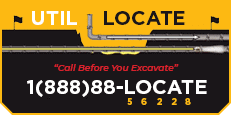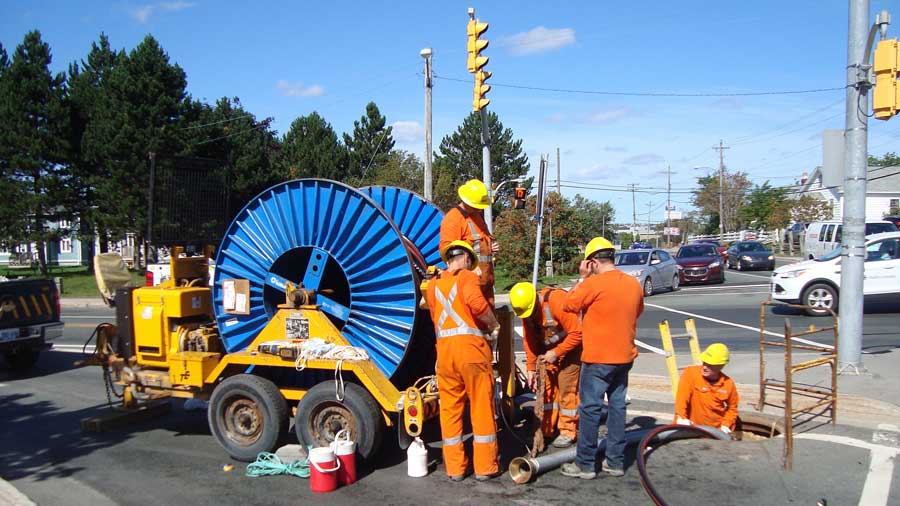It is well known that construction sites are inherently dangerous and there are a lot of risks that go along with excavating earth. Although it is tempting to choose the cheapest or least time-consuming option to get the job done, such choices can lead to expensive disasters down the line. Utility potholing uses vacuum excavation technology in order to carefully and efficiently locate all underground utility lines without damaging them.
Utility potholing is an excellent option for most construction projects and will likely save you and your crew both time and money. Using a professional team will ensure that your construction site is excavated properly and as quickly as possible. While potholing is an investment, it will ensure that you avoid extensive damage and expensive repairs or fines.
Keep reading to learn how vacuum excavation can help your construction project run smoothly without the risk of utility strikes.
Other Tools Don’t Cut It
When you compare potholing to the other tools available, it becomes quickly obvious that professional potholing is the best choice.
Those with smaller construction sites often think that excavating the land by hand is the best option because it is so inexpensive. However, digging with hand tools like shovels and trowels requires grueling physical labor. Depending on the site, it can also take many days to complete. The contractor might want the work completed by a certain deadline and it just isn’t possible to know exactly how long excavating by hand will take.
While hand tools might not cause damage to utility lines, it isn’t recommended that you use this time-intensive and exhausting method.
Read More: What You Need to Know About Potholing for Utilities
Meanwhile, you might also consider renting a backhoe because they are generally considered an affordable and efficient method. However, it is incredibly difficult to use finesse with a backhoe, which means there is a much greater chance of striking a utility line. This is a fine option if you are certain there are no live utility lines under the land but should be avoided otherwise.
If you do opt for a backhoe, remember to employ an experienced spotter who will help guide the equipment and avoid utility lines. Even so, the risk to utility lines is far greater than it would be with vacuum excavation.
How Potholing Works
Potholing works to carefully excavate a construction site through the use of air or water pressure.
Air or water is gently, but firmly, push through the earth so that the locations of utility lines can be discovered without physically touching them. Even better, the use of an air jet allows the earth to be stored and reused at a later time in the construction process. While this cannot be done with a hydro jet, both are great options for keeping your construction site safe.
Potholing is an effective method that involves clearing the earth away from utility lines. It is also time-efficient and cost-effective. When used properly, vacuum excavation is the best method available for any construction project.
Safety Precautions
As with any construction equipment or machinery, safety measures must be taken to ensure the well-being of your crew.
You will still need to plan ahead of time to fully understand how to vacuum excavate the property. For instance, you should call all relevant third parties who have knowledge of the construction site. These third parties may have information concerning utility lines, which will assist you during the excavation.
It is always safer to choose a professional, experienced team. These professionals understand the delicate excavation process and will be much faster and more skilled than an untrained worker.
A professional team will also understand the importance of inspecting the area beforehand. This involves creating a small hole through which the professional can explore the underground area. RADAR or digital technology doesn’t compare to visual verification of what is underground. Damage to underground utilities can result in unexpected expenses from repairs or fines.
Usually, these fines occur if the damage disrupts access to utilities for those living and working in the surrounding area. It is important to respect the local community and do everything possible to ensure the construction is safe and takes necessary precautions.
Read More: Potholing Utilities for A Cost-Efficient and Safer Excavation
When in Doubt, Seek Help
If you are in doubt about how to excavate your construction site, it is advised that you choose potholing. Vacuum excavation is an advanced technique that, when carried out by an expert, is both safe and efficient.
By opting for potholing, you avoid the risk of striking a utility line, which could severely impact the overall success of the construction project.
Not only will a professional team be able to understand the needs of your project, but they will carry out the work without putting workers’ health and well-being at risk, as well as protecting the land itself. See private utility locating companies near me.

